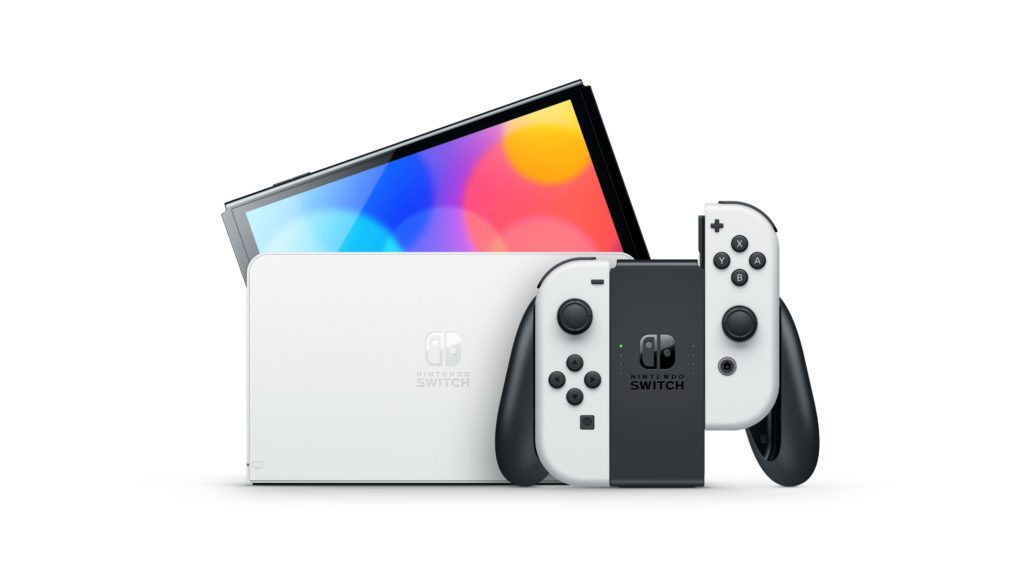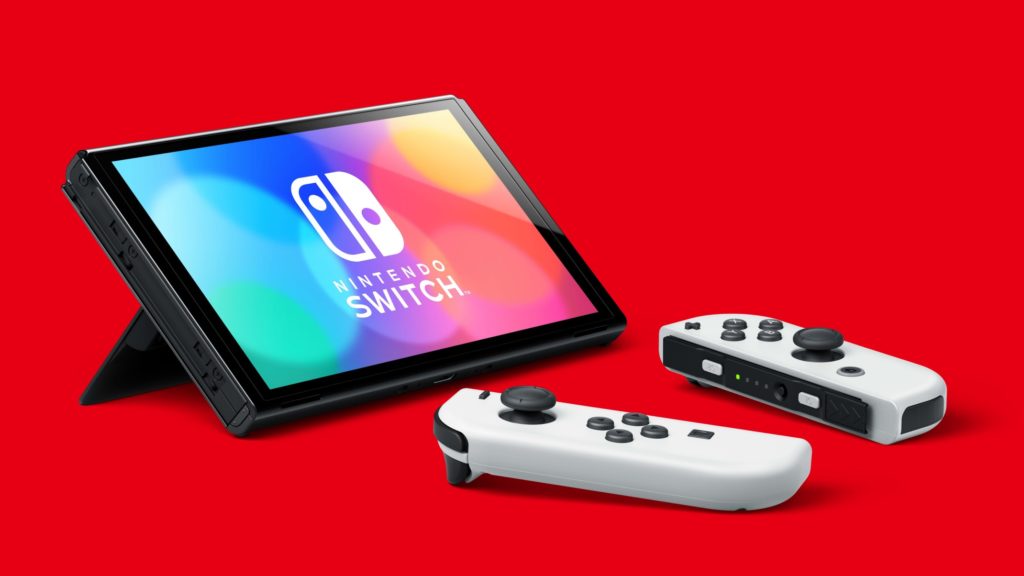Nintendo’s Switch OLED offers evolution rather than revolution, but it’s a highly desirable object that makes most sense when used as a handheld console.
When Nintendo’s Switch came out in 2017, it was perceived as being Nintendo’s last-chance saloon console-wise. Its predecessor, the Wii U, had been an almighty flop, and doom-mongers queued up to predict apocalyptic scenarios if the company got its next console wrong. But Nintendo had been in a similar position before, held its nerve and sprung the Switch on an appreciative world: a simply brilliant item of hardware that straddled the boundary between fixed and handheld consoles, and combined that with the motion-sensing that made the Wii such a phenomenon.
Four years on and the Switch is a huge and deserved success, but it’s getting on a bit – and, true to Nintendo’s form, it has always been based on much less cutting-edge technology than its rivals from Microsoft and Sony. So an update was due, and we now have that, in the form of the Switch OLED.
The Switch OLED is very much an update, as opposed to Switch 2.0. And in particular, one aimed at those whose focus is more on using it as a handheld, rather than fixed, console. Its centrepiece, as hinted at in the name, is its OLED screen. The original Switch’s built-in screen was by no means bad, but the OLED’s one is stunning, in terms of brightness and fidelity. Its colours pop incredibly, and it’s slightly bigger than that of the original Switch, with a 7-inch rather than 6.2-inch diagonal.
A classy piece of hardware
Whatever the lighting conditions, the Switch OLED’s screen impresses – and for those of us afflicted by a touch of long-sightedness, its extra size and sheer crispness makes it much easier to read text. If you have a Switch that you tend to use in its handheld configuration, and it’s beginning to show signs of wear and tear, the screen alone offers ample justification for upgrading to a Switch OLED.

Beyond its screen, the other main improved element in the Switch OLED is the presence of 64Gb, rather than 32Gb, of internal storage. That isn’t so generous that you won’t have to augment it with a Micro SD card, but it helps. And the stand on the back of the unit has been widened and beefed up significantly, which is also good.
The Switch OLED also looks and feels a tiny bit classier than the original, especially in its monochrome colour scheme with a white dock and Joy-Cons. The main body of the Switch OLED has the same surface profile as the original, but is ever so slightly thicker and heavier, which makes it feel more solid. Despite that, it’s still able to accommodate Joy-Cons from the original model.
Transferring your games library
It’s a fair bet that the majority of Switch OLEDs will be purchased by gamers who already own an original Switch, so the process of sucking your saved games off that and into a Switch OLED is crucial. The first thing to note in that regard is that, if you want to be able to continue using your old Switch as well as the OLED, you’re going to need a subscription to Nintendo Switch Online. Which sounds a bit cheeky, but at least a year’s subscription only costs £17.99, and brings a massive selection of old SNES games for free, plus the ability to play the likes of Mario Kart 8 online (which, of course, used to be possible for free).
The actual process of porting over your saved games is easy enough, but somewhat clunky, although the associated process of redownloading games you’ve already purchased is much smoother, as long as you know what to do (head to the eShop, click your User icon, select Redownload and you get to a list of games you already own).
It is possible to move your User profile and everything associated with it from an old Switch to a new Switch OLED, but it makes more sense to take a more micromanaged approach, picking the saved games you want to bring across. That happens via Bluetooth, and is pretty quick, but has a glaring drawback: you can’t pick all your saved games at once, but must scroll through them individually, tapping the screens of both Switches a couple of times per saved game.
If you swap an SD card from an old Switch to a Switch OLED, it insists on reformatting it, thereby chopping off everything that was previously saved on it, so that’s a move you should only make when you’re happy that you’ve ported everything you need over from your old Switch.
Supremely usable
Once you have your Switch OLED set up to your satisfaction, it becomes a joy to use. Not, it must be said, in any way which is radically different to the original Switch, but in the hand, it feels reassuringly more solid than its predecessor (its construction is sufficiently chunky that you couldn’t imagine it developing the bending issues that afflicted some early Switches, for example), and that stunning bright, contrasty screen renders handheld play an instantly more enjoyable pursuit than it was with the original Switch – no matter the lighting conditions.

If you’re primarily a docked Switch player, the Switch OLED’s sales pitch is less seductive. On the face of it, it feels disappointing that Nintendo didn’t take the chance to upgrade it to 4K output, bringing it into line with the modern crop of rival consoles. But the flipside of that would have been vastly increased game download sizes, so Nintendo would also have had to have given it an order of magnitude more by way of storage, thereby bumping the price up massively.
Games played on a Switch OLED via its dock certainly feel like they have solid frame-rates – perhaps more so than before, when playing games ported from other platforms like Bayonetta 2, for example. But all you really notice on a day-to-day basis when playing games on a Switch OLED docked to a TV is that, thanks to the classy white dock, it looks much more like a grown-up item of lounge furniture, as opposed to a toy.
The Switch OLED is an evolutionary step on the Switch ladder, rather than a revolutionary leap to some form of Switch 2.0. Many people will find that disappointing. But if you intend to play a healthy amount of your Switch games in handheld configuration, it’s well worth the investment, especially if you have an original Switch or a Switch Lite which is starting to feel a bit rough around the edges. Its fabulous screen really does enhance the handheld gaming experience. Plus it’s just a classy, well made item of consumer electronics – and, of course, a Switch, which means it offers a pathway to a huge library of some of the finest gaming experiences in existence. While it may not be an Earth-shattering object, it is, nevertheless, a lovely thing to possess.
